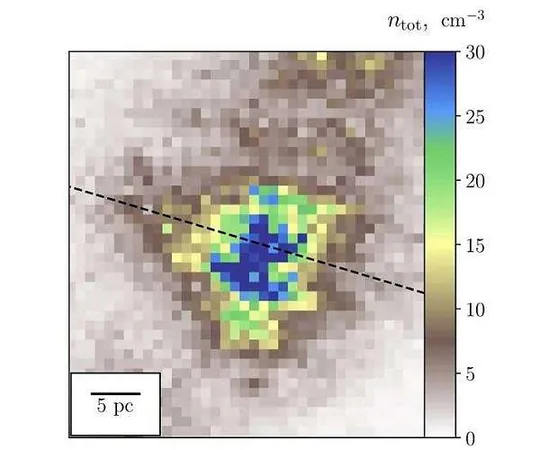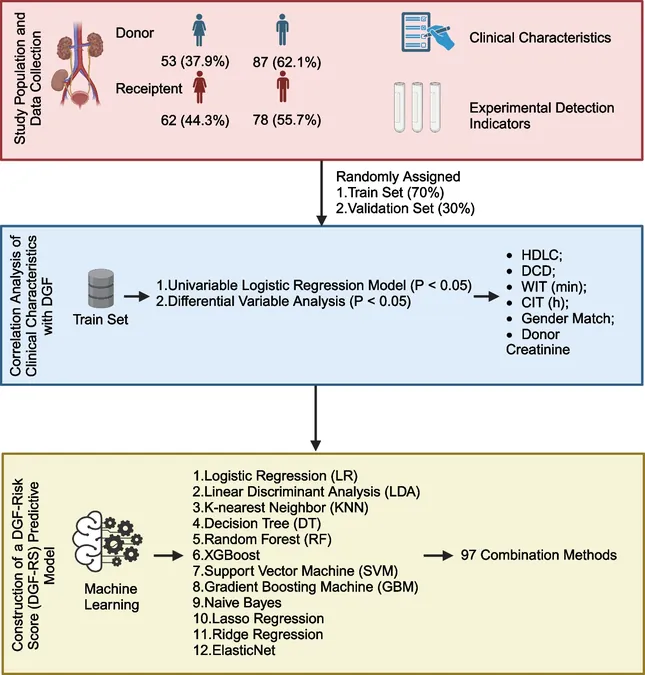
Shocking Discovery: Milky Way's Cosmic-Ray Ionization Rate Exposed as Far Lower Than Thought!
2024-09-29
In a groundbreaking revelation, a team of astrophysicists from the Max Planck Institute for Extraterrestrial Physics (MPE), led by esteemed scientists Marta Obolentseva and Alexei Ivlev, has dramatically revised our understanding of the cosmic-ray ionization rate (CRIR) in the Milky Way. Recent findings show that the CRIR is not just slightly lower but a staggering ten times lower than earlier estimates!
The influence of cosmic rays (CRs) on the formation and evolution of molecular clouds has long been recognized, yet determining the exact CRIR—an essential measurement that represents how frequently these high-energy particles ionize gas molecules—has proven to be a monumental challenge for researchers. The historical difficulty lay in the indirect methods used, which often led to overestimations. The Voyager probes, for instance, provided valuable data about CRs beyond our solar system, but they could only sample a limited area of the local interstellar medium.
For years, scientists relied on indirect calculations, primarily focused on specific ions such as H3+, which are generated when cosmic rays collide with molecular hydrogen (H2). These indirect estimates often produced figures that seemed unrealistically high, thus leading to a persistent mystery in cosmic-ray research.
However, the breakthrough came thanks to an innovative 3D mapping of dust extinction by the Gaia satellite. Equipped with this advanced data, the MPE team meticulously re-evaluated H3+ observations and employed simulations to model the intricate structures of individual molecular clouds. Remarkably, their revised calculations aligned closely with the CR spectra recorded by Voyager, effectively resolving a long-standing discrepancy in cosmic-ray research.
"We were astonished to find that our new CRIR values are not just slightly lower but a complete order of magnitude less than what was previously assumed," remarked Alexei Ivlev. This vital recalibration not only harmonizes with Voyager's findings but is likely to reshape our fundamental understanding of cosmic chemistry.
Kedron Silsbee highlighted the broader implications of this research for astrochemical modeling: “These findings not only refine the CRIR but also enhance the accuracy of astrochemical simulations. Combining precise gas density determinations with radiation field observations will open new avenues for discoveries in the field.”
In a related twist, additional scrutiny led by Professor David Neufeld from Johns Hopkins University revealed that prior estimates regarding gas densities in diffuse molecular clouds were also significantly inflated. Neufeld found flaws in the methods previously used to estimate these densities, particularly in the excitation rates of molecular carbon (C2), leading to confirmations that align with new extinction data.
“I was initially skeptical of lower density estimates based on dust maps. However, re-evaluating previous methods revealed that they indeed produced exaggerated results," Neufeld admitted.
These revised findings bring profound implications for our understanding of molecular clouds, star formation, and the intricate dynamics of the Milky Way. As Paola Caselli, the director of the Center for Astrochemical Studies at MPE, emphasized, "Cosmic rays are fundamental to the chemical evolution and dynamics in space where stars and planets emerge. Knowing the CRIR is one of our core scientific goals."
In light of these pivotal advancements, the astrophysical community will undoubtedly need to reassess prior cosmic-ray ionization estimates in light of these new insights. Prepare for a revolution in our understanding of the cosmos!





 Brasil (PT)
Brasil (PT)
 Canada (EN)
Canada (EN)
 Chile (ES)
Chile (ES)
 España (ES)
España (ES)
 France (FR)
France (FR)
 Hong Kong (EN)
Hong Kong (EN)
 Italia (IT)
Italia (IT)
 日本 (JA)
日本 (JA)
 Magyarország (HU)
Magyarország (HU)
 Norge (NO)
Norge (NO)
 Polska (PL)
Polska (PL)
 Schweiz (DE)
Schweiz (DE)
 Singapore (EN)
Singapore (EN)
 Sverige (SV)
Sverige (SV)
 Suomi (FI)
Suomi (FI)
 Türkiye (TR)
Türkiye (TR)